The universe is home to an incredible variety of galaxies, each with its own unique features and scale. Some of the largest ones span millions of light years, containing trillions of stars and countless planets. These massive galaxies provide astronomers with valuable insights into the processes that shape the cosmos. From enormous spiral galaxies to giant ellipticals, the sheer size of these cosmic giants is truly awe-inspiring. In this article, we explore some of the largest known galaxies in the universe and uncover what makes each one so remarkable.
NGC 224 (Andromeda Galaxy)
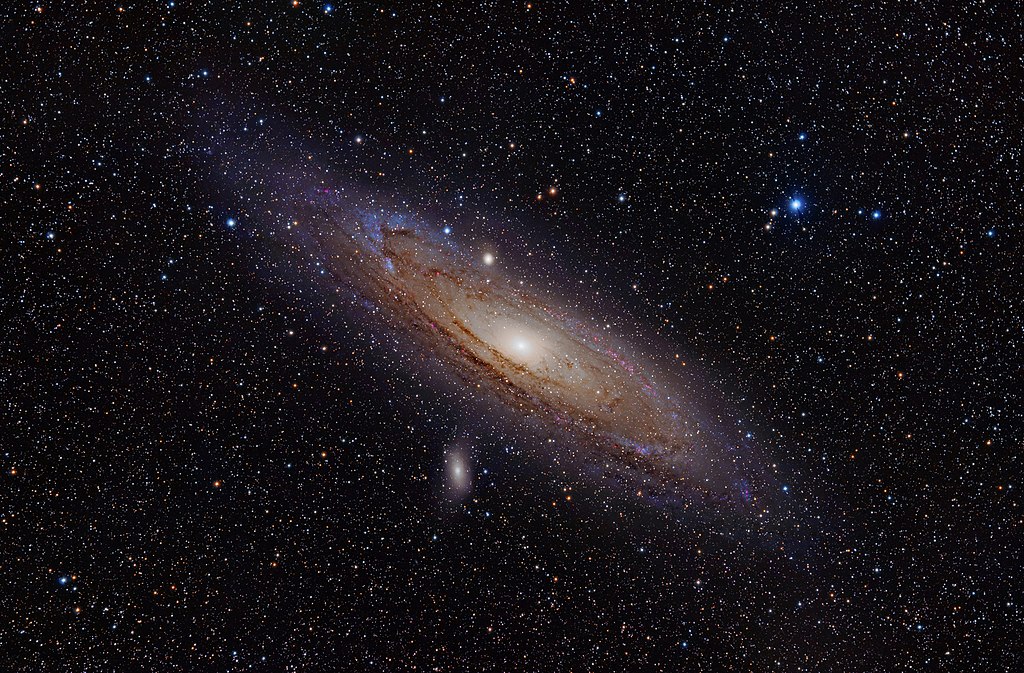
The Andromeda Galaxy, also known as NGC 224, is one of the closest giant galaxies to the Milky Way and is part of the Local Group. It spans approximately 220,000 light years across and is located about 2.5 million light years from Earth. It contains about 1 trillion stars, many of which are older and red, though it also has regions of active star formation. It is approaching the Milky Way at a speed of 110 kilometers per second and is expected to collide with our galaxy in about 4 billion years. First observed by Persian astronomer Abd al-Rahman al-Sufi in 964 AD, it has been studied extensively for its structure, star content, and dark matter halo. Its large size, diverse star population, and future collision with the Milky Way make it a key object of interest for astronomers. The collision between the two galaxies is expected to form a new elliptical galaxy, sometimes referred to as “Milkomeda.”
Condor Galaxy (NGC 6872)
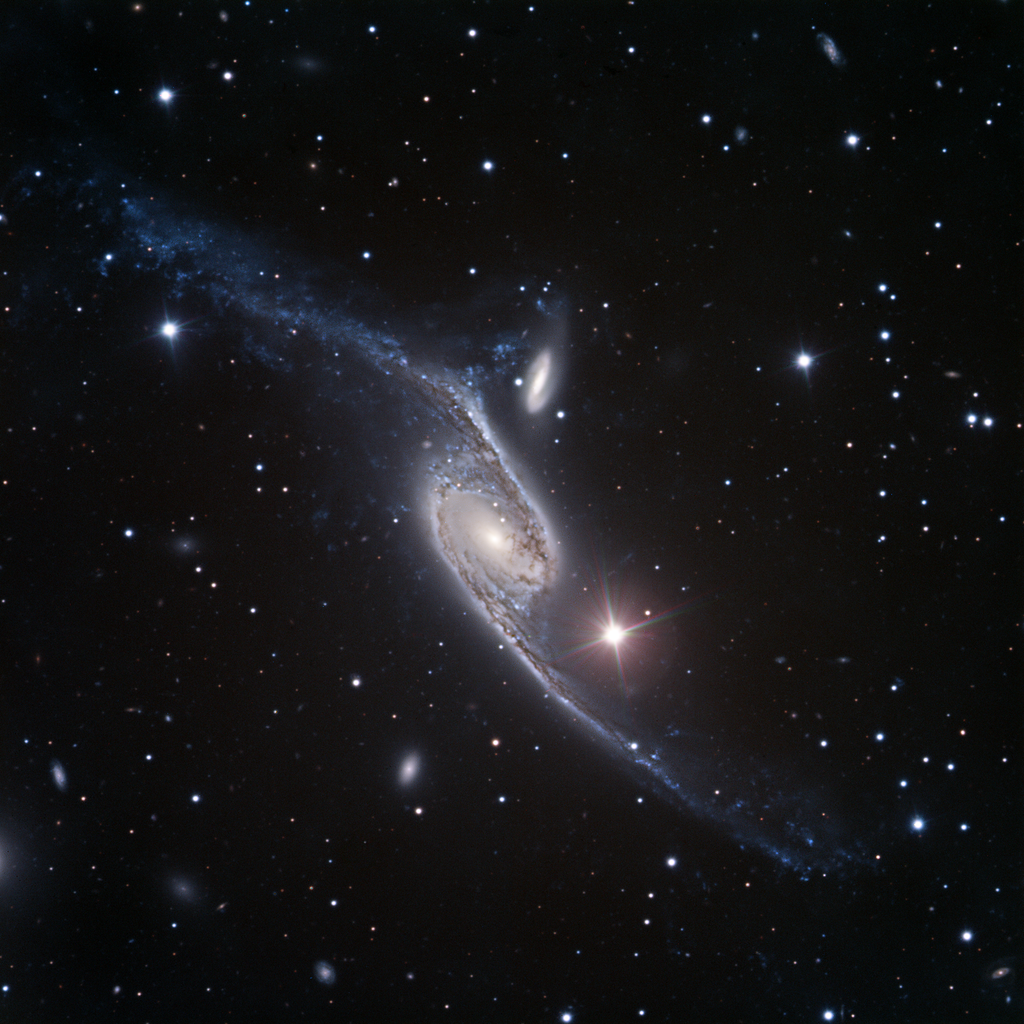
/ Wikimedia Commons
The Condor Galaxy, also known as NGC 6872, is one of the largest known barred spiral galaxies, located approximately 212 million light years away in the constellation Pavo. Spanning over 522,000 light years across, it holds a record for its enormous size. Its extended spiral arms are likely the result of a past gravitational interaction with a smaller galaxy known as IC 4970, which it continues to interact with today. These interactions have sparked star formation in the outer regions, creating massive, bright clusters of young stars. Discovered by John Herschel in the 19th century, it continues to intrigue astronomers for its unique structure. Its outer arms, which stretch across vast distances, are a clear indication of how galaxy mergers can lead to dramatic changes in morphology. Scientists predict that it will eventually merge with IC 4970, leading to the formation of a new elliptical galaxy.
Malin 1
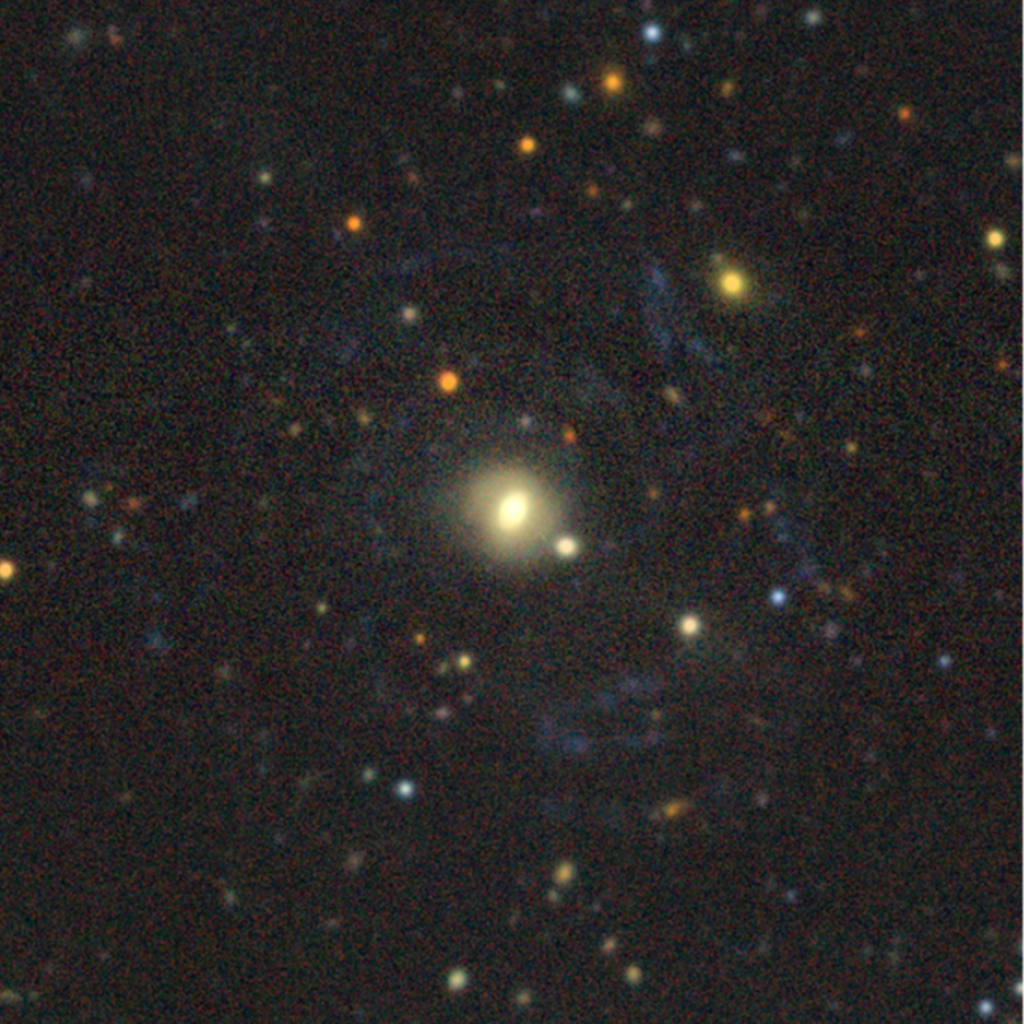
Malin 1 is a gigantic low surface brightness spiral galaxy located about 1.2 billion light years away in the constellation Coma Berenices. With a diameter of approximately 650,000 light years, it is the largest known spiral galaxy. It was discovered in 1986 by astronomer David Malin, who used specialized photographic techniques to detect its faint, extended structure. It contains a central bulge and vast spiral arms that stretch far from the core, but it is very dim, making it difficult to observe. Despite its size, it has a relatively low rate of star formation, likely due to the diffuse nature of its gas. Its low brightness is due to its isolation from other galaxies, as it has not interacted with neighboring systems for billions of years. It remains one of the most mysterious and least understood of the giant galaxies, with many questions remaining about its formation and evolution.
NGC 262
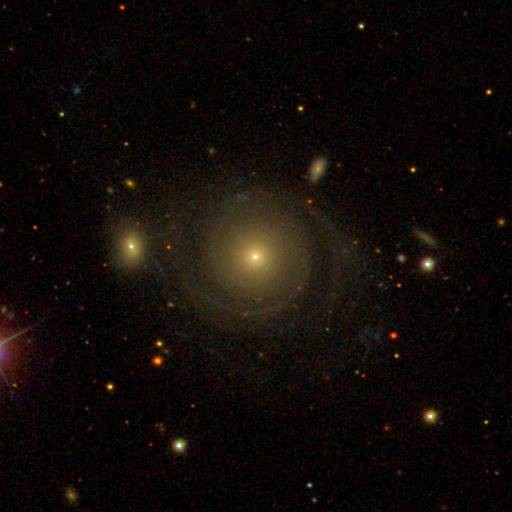
NGC 262 is a giant spiral galaxy located about 200 million light years from Earth in the constellation Andromeda. It has a diameter of roughly 800,000 light years, making it one of the largest known spiral galaxies. It is home to billions of stars, and its arms are filled with gas and dust that likely support ongoing star formation. It is part of a small group of galaxies, and its size suggests that it has likely consumed smaller galaxies over time. It was discovered by William Herschel in 1786, adding to his many contributions to the study of galaxies. The central region of this cosmic giant is dominated by older stars, while its outer regions show signs of recent star formation. Its large size and ongoing interactions with nearby galaxies make it an interesting target for studies on galaxy growth.
UGC 2885
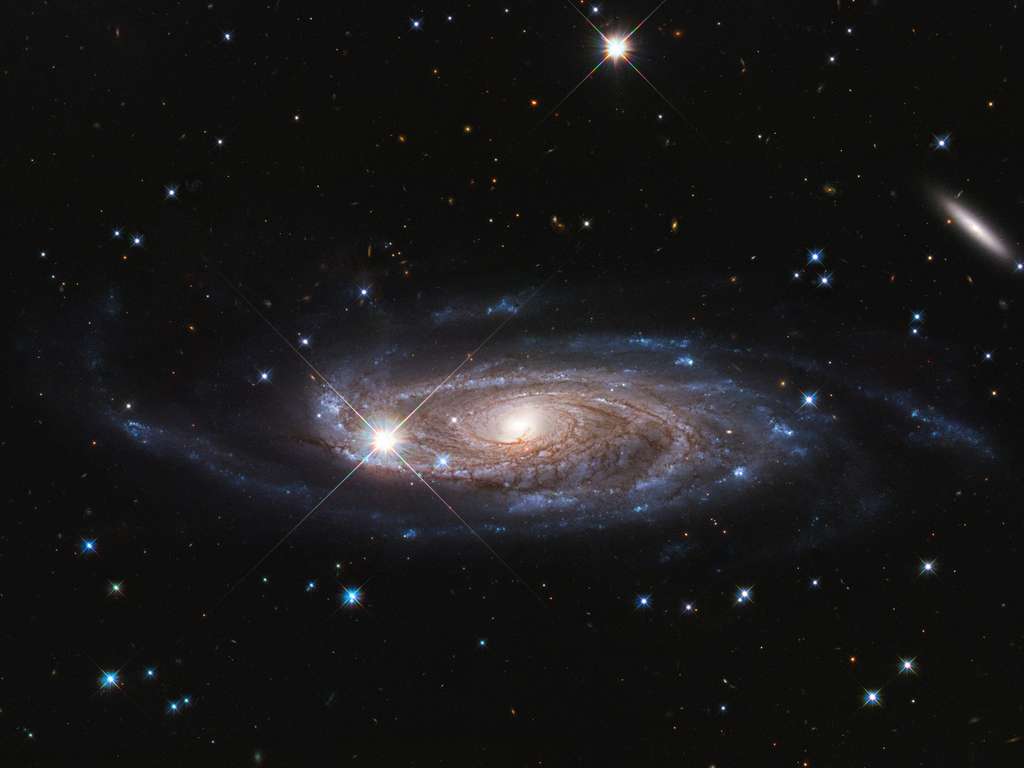
UGC 2885, nicknamed “Rubin’s Galaxy,” is a massive spiral galaxy located about 232 million light years away in the constellation Perseus. With a diameter of around 800,000 light years, it is one of the largest spiral galaxies in the universe. It contains about 1 trillion stars, and its structure is highly symmetric, with beautiful spiral arms extending far from the core. It is named after astronomer Vera Rubin, who discovered its size and helped revolutionize the understanding of dark matter. Despite its size, it is a relatively quiet galaxy, with low rates of star formation and little evidence of recent interactions with other galaxies. Its smooth structure and lack of major disturbances suggest that it has led a peaceful existence. Its enormous size and dark matter halo provide valuable insights into the role of dark matter in galaxy formation.
Abell 2261 Brightest Cluster Galaxy (BCG)
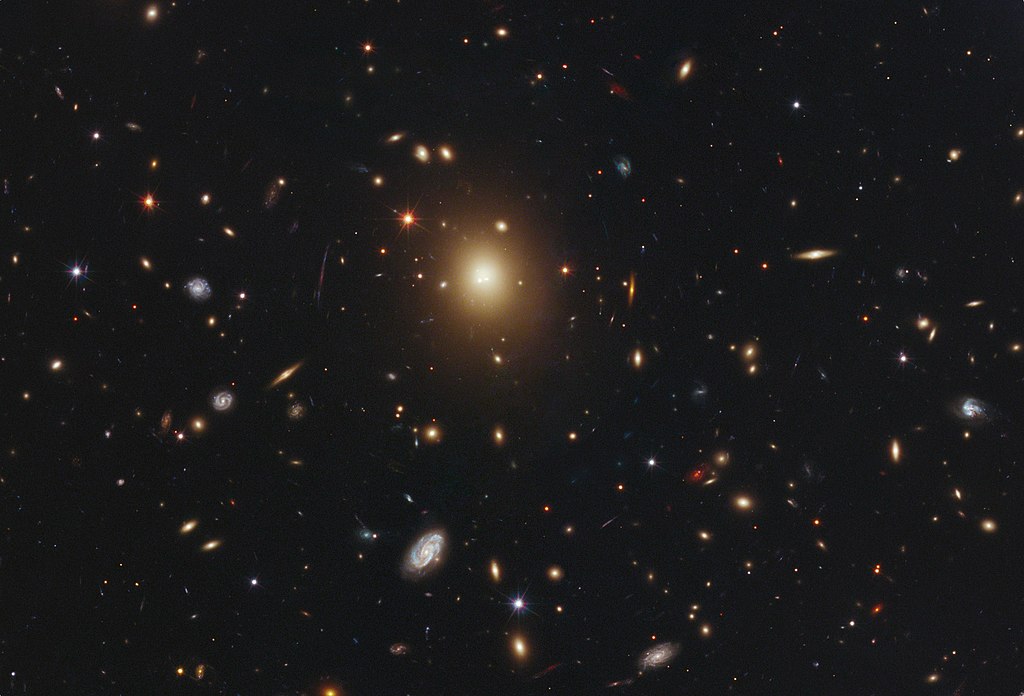
The Abell 2261 BCG, located about 3 billion light years away, is a stunning giant galaxy that stands out due to its massive core. With a diameter estimated at over 1 million light years, it is among the largest known galaxies. It is known for its exceptionally diffuse core, which is unusually large compared to similar galaxies. It is home to billions of stars, but its core is particularly intriguing because astronomers have not yet detected the expected supermassive black hole at its center. Discovered as part of the Abell galaxy clusters, it has likely grown through repeated mergers with smaller galaxies. Its diffuse light and lack of a central black hole challenge the current understanding of galaxy formation and black hole growth. Scientists believe that future observations could reveal hidden details about its core and any potential black hole.
Hercules A
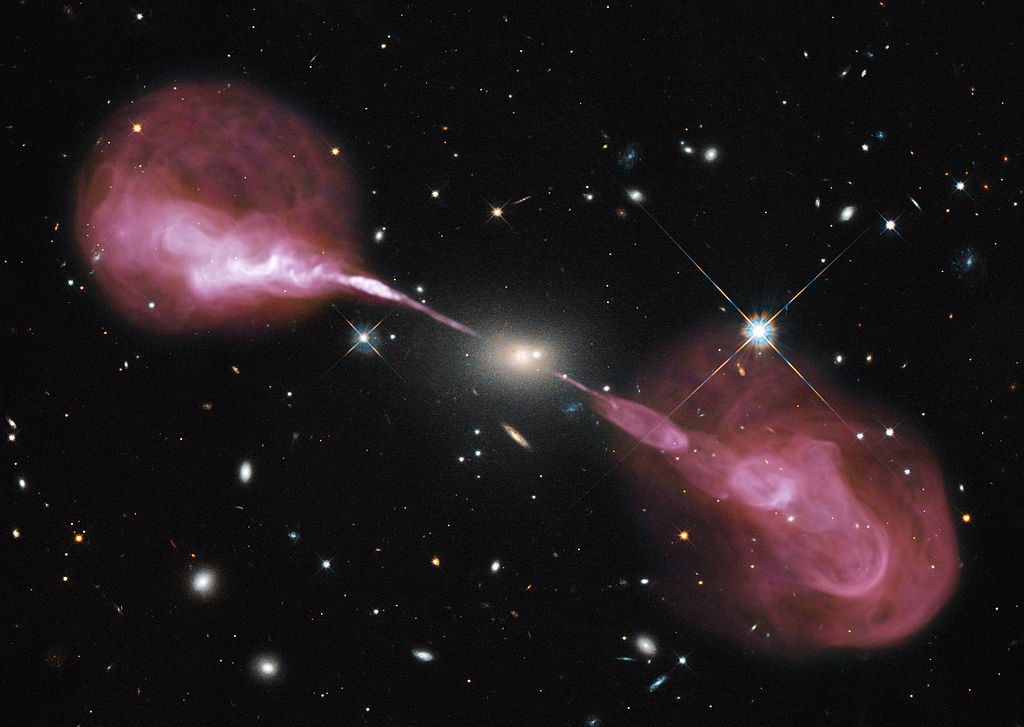
Hercules A is another remarkable giant elliptical galaxy, located about 2 billion light years away. It spans roughly 1.5 million light years in diameter, making it one of the largest galaxies in the known universe. It is notable not only for its size but also for the enormous jets of plasma emitted from its core, powered by a supermassive black hole. These jets extend over 1 million light years, far beyond the visible size of the galaxy itself. It contains hundreds of billions of stars, as well as a considerable number of planetary systems. It was discovered in the mid-20th century through radio observations, as the jets make it a powerful source of radio waves. Its black hole is estimated to have a mass of about 4 billion times that of the Sun. The massive black hole and its jets play a significant role in regulating its star formation, by heating the gas in it and preventing it from cooling to form new stars. The size and scale of its jets make it a prime subject for studying supermassive black holes and their influence on galaxy formation.
Coma Berenices Central Galaxy (NGC 4889)
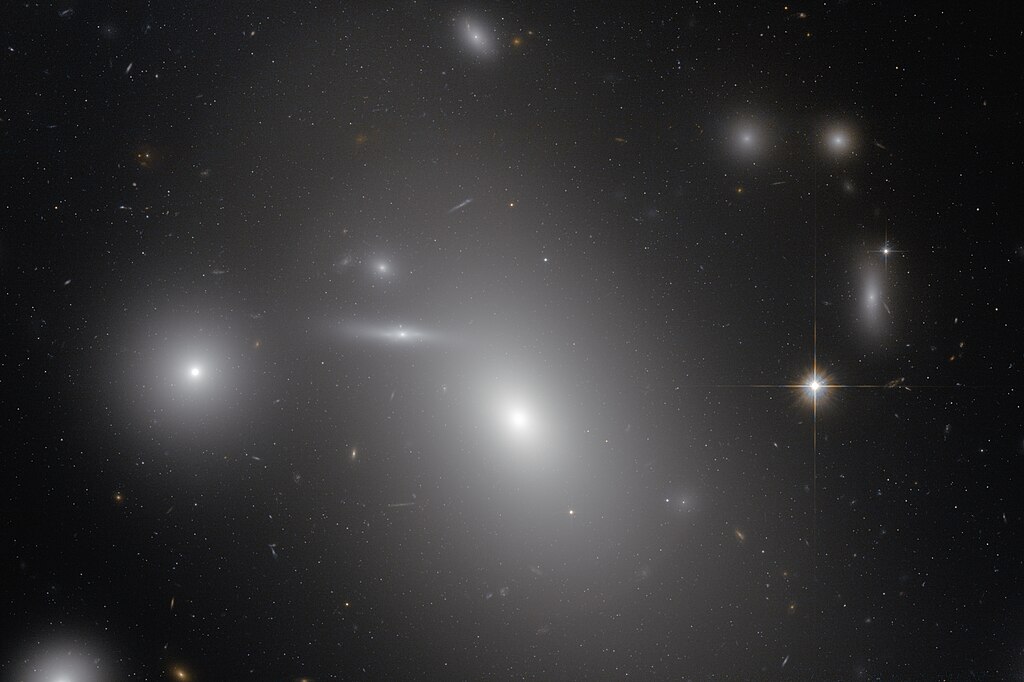
NGC 4889, located in the Coma Berenices galaxy cluster, is one of the brightest and largest galaxies in that region. It is approximately 300 million light years away from Earth and spans nearly 2.2 million light years in diameter. This elliptical galaxy is home to an extraordinary supermassive black hole, estimated to be 21 billion times the mass of the Sun. It hosts hundreds of billions of stars, many of which are red, indicating an old stellar population. It was discovered by William Herschel in 1785, making it one of the earliest known massive galaxies. It is relatively inactive when it comes to star formation, as most of its gas has been heated or expelled by interactions with neighboring galaxies. Its central black hole is one of the largest ever found, and it profoundly influences the behavior of the galaxy. Its massive size and central black hole make it a significant feature of the Coma Cluster.
ESO 146-5
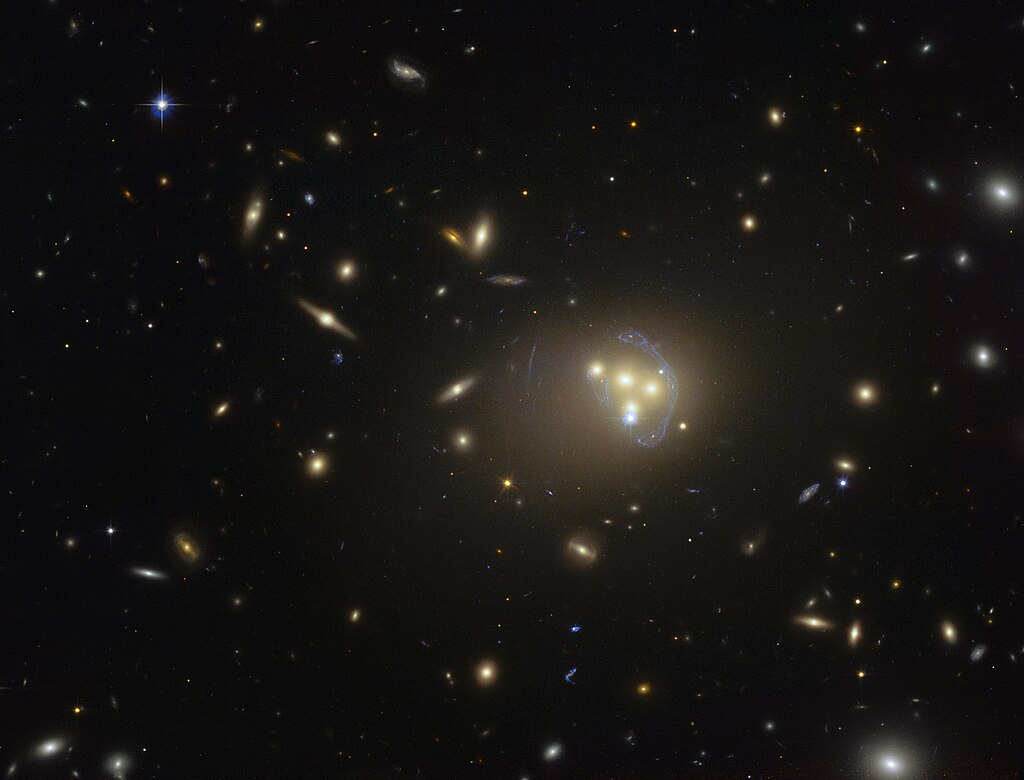
ESO 146-5 is a gigantic galaxy located about 6 billion light years from Earth in the direction of the constellation Indus. With a diameter of approximately 4 million light years, it is among the largest galaxies ever observed. It is an elliptical galaxy with several hundred billion stars, along with vast amounts of gas and dust that likely support ongoing star formation. Despite its enormous size, it is relatively dim, as it does not have many regions of active star birth. It was discovered by a team of astronomers using the European Southern Observatory’s telescopes. It has likely grown to its immense size by consuming several smaller galaxies in its vicinity. Its size, mass, and isolated location make it a standout example of the largest elliptical galaxies in the universe.
IC 1101

IC 1101 is an elliptical galaxy located over 1 billion light years away in the Abell 2029 galaxy cluster. This colossal galaxy is one of the largest known, stretching about 6 million light years across. With its vast expanse, it is home to hundreds of trillions of stars, many of which are likely surrounded by planetary systems. It was discovered by British astronomer William Herschel in 1790. It has an estimated mass of 100 trillion solar masses, making it one of the most massive galaxies in the universe. Its central region is dense with older, red stars, while younger stars are rare, indicating that it has not seen much recent star formation. Due to its size and location in a dense cluster, it has probably merged with several smaller galaxies over time. The core of this cosmic giant also likely houses a supermassive black hole billions of times the mass of the Sun.
This article originally appeared on Rarest.org.
More from Rarest.org
19 Majestic Trees Facing Extinction and How We Can Save Them

Majestic trees, some of the most iconic species on the planet, are now facing the threat of extinction. Human activities, environmental changes, and invasive species are pushing them to the brink. Read More.
15 Remote Deserts with Unbelievable Natural Wonders

Remote deserts hold a unique charm that captivates adventurers and nature lovers alike. These vast, desolate landscapes hide extraordinary natural wonders that defy their barren reputations. Read More.
14 Ancient Plant Species That Are on the Verge of Extinction

The Earth is home to a wide variety of plant species, some of which have thrived for millions of years. However, many ancient plants are now on the brink of extinction due to habitat destruction, climate change, and human interference. Read More.
